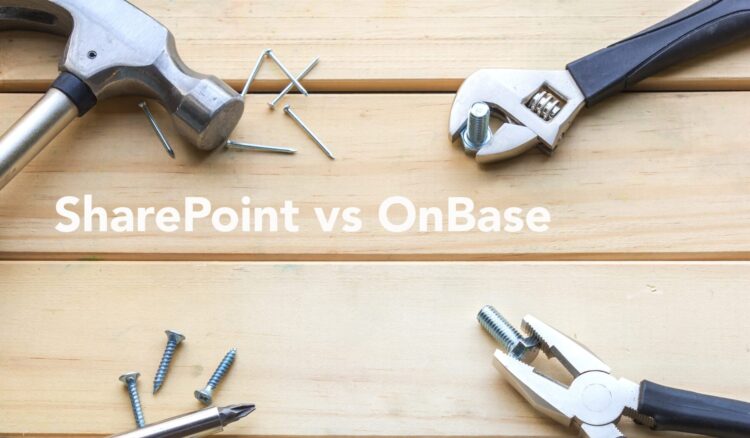Wondering if you need to install any special software to start taking advantage of OnBase APIs?
The answer is maybe – it depends on a few factors.
Let’s get into the underlying architecture there and help you determine whether you need extra software to move forward. This blog and the video below will show you how.
Overview of API Architecture in OnBase: What You Need to Get StartedDo I Need to Install Any Special Software to Start Using OnBase APIs?
Consideration 1: Context
Starting out, one question that you’re going to want to answer is the context in which you wish to access the API. Here are a few different contexts:
- Automation: Throughout the various OnBase clients, there are several hooks which will allow you to attach a Unity script and inject custom code at that point in the process. This context is referred to as automation, and it runs within an existing OnBase client session.
- Integration: Another context is integration, which is the API running externally to OnBase, calling into OnBase from an external application, whether something you wrote yourself or another application that allows for connecting to other software.
- Older APIs: You also have options for different APIs throughout OnBase’s history. Various APIs have come and gone. Currently, there are two of consequence, with those being Unity and REST:
- Unity is an older SOAP based API, and it is available in both the automation and the integration context. Since this API has been around longer, it has more functionality available to it currently.
- The REST API, as the name implies, uses representational state transfer. At this time, it is available only in the integration context, although that could change in the future. Being newer, it’s currently less fully featured than Unity, although it is continuously growing, getting new features added with each release of OnBase. Eventually, this will replace Unity as the flagship API.
Consideration 2: Server
On the server side, the components necessary for this are going to vary depending on which API you choose:
- The Unity API is going to connect through the same application server as the Unity and web clients do. So, if you’re using either of these clients, you already have the infrastructure in place that you would need to use the API.
- The REST API is going to connect through the API server, and it is also dependent on the Hyland identity service, formerly the identity provider or IDP.
The Unity and web clients are also capable of using IDS or authentication. So, if you have that configuration in your setup, then you already have all of the components that you need to use the REST API.
Consideration 3: Client-Side Components
Depending on the API that’s chosen, there are also some client-side components that might be required:
- With the REST API, there are no special client-side considerations. All you need is the ability to send and receive web traffic.
- The Unity API requires that you include Hyland libraries in the calling application. The two DLLs required for this can be copied from any core-based application, which would be an application server, unity client, OnBase Studio, etc.
These DLLs are dependent on the full DotNet Framework. For instances where the full framework is not available on the client side, for example, a Linux or Mac environment, there are a couple of other options available here.
It’s also worth mentioning that there has been a Java version of the Unity API around for quite some time. Also, starting in EP4, Hyland introduced a version of the DLLs that target.net standard 2.0. These other versions will have some very minor differences from the full version due to certain functionality that is dependent on the full framework.
Additional Assistance
So that was a very high-level overview of the infrastructure that you would need to use the APIs.
Hyland makes extensive documentation of its APIs available online at sdk.onbase.com to anyone who has a Hyland Community account. If you’re interested in learning more, we recommend you check out the site.
Want More Content Like This?
Subscribe to the Naviant Blog. Each Thursday, we’ll send you a recap of our latest info-packed blog so you can be among the first to access the latest trends and expert tips on workflow, intelligent automation, the cloud, and more.






